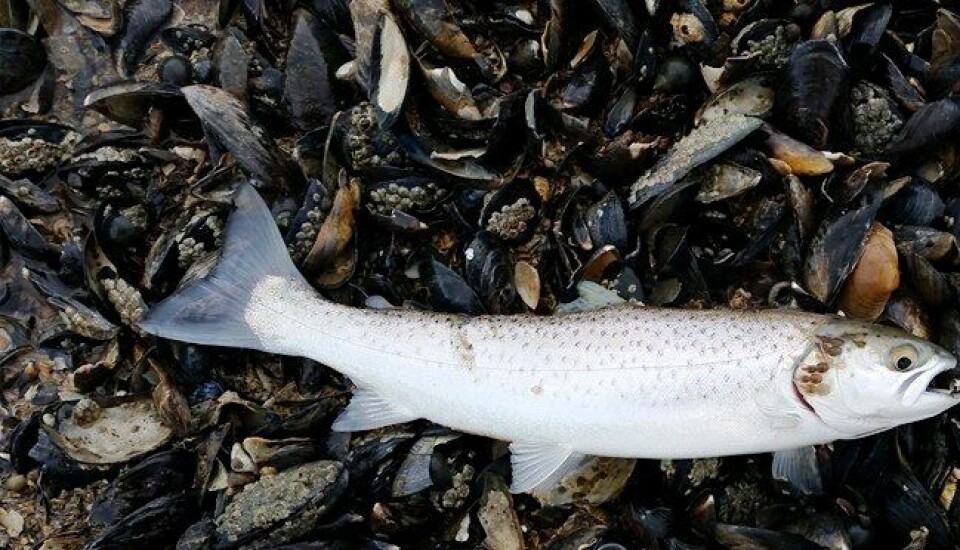
High sea lice levels ‘will kill wild salmon and trout’
High levels of sea lice observed recently will probably lead to the deaths of wild salmon and trout, Norway’s Institute of Marine Research has warned.
The warning of mortalities in Hordaland, Sogn og Fjordane and southern parts of Møre og Romsdal comes after preliminary results from the institute's spring monitoring of salmon lice along the country's coast.
“In addition to the fact that some fish are likely to die, salmon lice also have negative effects for fish that are attacked but survive,” says Ørjan Karlsen, head of the National Monitoring Program for Salmon Lice. “For example, it may grow slower, causing damage due to lice eating on it and thus increasing the risk of infections. At worst, fish with large damage from lice die. Since the general health of the fish is reduced, it can also be easier for predators.”
Salmon smolt affected in spring, sea trout all summer
Karlsen adds: “In the spring, salmon smolts are affected if there are a lot of salmon lice. Then the fish swim out from the rivers and towards the ocean. Since these fish are only about 20 grams, they will have trouble surviving if they get a lot of lice.
“The sea trout is more prone to local infestation of salmon lice in the fjords, but at the same time it has the opportunity to swim back to fresh water to try to get rid of the lice there. However, this can lead to poorer access to food and hence poorer growth, and it may also prevent sexual maturation.”
More monitoring
This year’s monitoring of salmon lice started on May 1, and is more extensive than previous years. The surveillance covers the coast from Telemark to the Varangerfjord in eastern Finnmark. The monitoring is carried out in connection with the expected time for the migration of salmon smolt. Until now, the areas north of Trøndelag have been investigated, since emigration starts in the southern Norwegian rivers and moves gradually in time north along the coast.
Few salmon lice in some areas
There is little farming in southern Norway. This area is therefore used as a reference area where the infection level of salmon lice on sea trout is considered normal. There are no expected negative effects of salmon lice on stocks in this area. It is expected that lice also has no adverse effect on the stocks of either sea trout or wild salmon smolt in the investigated areas in Rogaland.
The Romsdalsfjord and Trondheimsfjorden are currently the northernmost fjords systems that have been investigated. In both, few salmon lice were observed, and in spring, lice probably did not adversely affect the wild fish, researchers believe.
About the monitoring
The monitoring of salmon lice is carried out by the Institute of Marine Research in collaboration with the Norwegian Institute for Nature Research and UNI Research Environment. The results presented now will be further analysed as new data arrives. The next status report will be in the autumn, with the final report published at the end of the year.























































